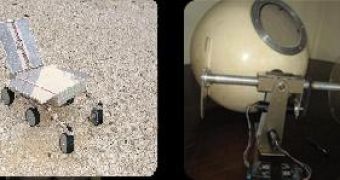Anyone thinking that the Tegra platform wasn't going to make a name for itself anywhere outside the smartphone and tablet market would be dreadfully wrong.
In fact, that would be particularly wrong to say since the technology might end up going beyond the confines of our little planet.
Some may have heard of the Google Lunar X-Prize challenge.
This is a competition, with a $30 million monetary stake, that will select what is considered the best solution for launching a rocket into space, putting a human crew in an orbiter around our planet Earth and then going ahead with the next step.
That next step is the launching of a lunar rover, a small machine that would travel across the surface of our planet's satellite, reduced gravity and all.
It is here that the NVIDIA Tegra platform (Tegra 3) could show its assets, within a year or so (launch is in December, 2012).
Team Synergy Moon is collaborating with Martin Peniak, a scientist that worked on the Mars Rover Simulator (the one built in conjunction with the European Space Agency).
Building on his experience with ESA, Martin chose NVIDIA's CUDA technology as a basis for its work.
His idea is to use more than one Tegra system to make a rover with autonomy of movement.
The Tesla Lunar Rover and Tesla Surveyor are what the devices are called.
The idea would be for an autonomous Lander, with several rovers packed in, to be launched from the orbiter to the moon.
“The Tesla Surveyor is a spherical rover, designed as a virtual excursion vehicle. Equipped with twin high definition video cameras for stereoscopic vision, the Tesla Surveyor will take viewers on a trip across the surface of the moon,” says team Synergy Moon.
“The Tesla Prospector is a more traditional 4 wheeled rover, designed as a virtual prospector, with sensors and cameras to examine the environment and identify the mineral content of the rocks and lunar regolith.”

 14 DAY TRIAL //
14 DAY TRIAL // 